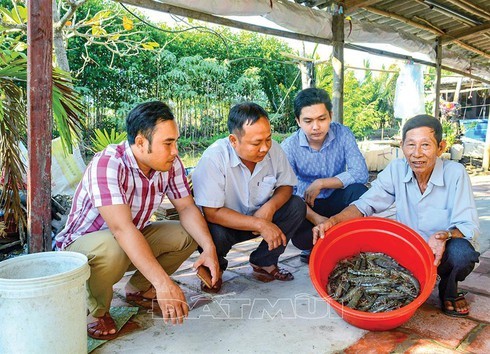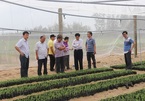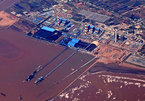The new cooperation program between Vinatom and the provincial authorities began with a field trip of the institute's scientists to local shrimp farms, including Nam Bo Cooperative.
This was an important survey that helped discover important information about the problems the farms face and their needs.

Ca Mau is expected to become a large-scale shrimp farming area of the country
Ca Mau is expected to become a large-scale shrimp farming area of the country with an area of 300,000 hectares. The province has favorable conditions to develop shrimp farming, including brackish water, U Minh mangrove forests and farming experience.
However, Ca Mau is facing problems hindering the development of shrimp hatchery. The road structure is not favorable, the fresh water supply system had not been developed, and the seafood processing system is not very good.
Meanwhile, farmers lack capital to expand farming areas or apply new farming techniques. Even if they can borrow capital, they cannot access suitable techniques for households, because the techniques provided fit large-scale farming.
| Following successful cooperation with Quang Ngai province, the Vietnam Atomic Energy Institute (Vinatom) has begun cooperating with Ca Mau to solve local problems with nuclear engineering and radiation technology. |
Another big problem of Ca Mau is the fresh water shortage. To get water for farming, people use water from wells they drill.
The uncontrolled underground water exploitation may pollute underground water, affect the water reserves of the southern region, and lead to land subsidence, causing the land to sink faster in the context of climate change.
Severe drought and saline intrusion in the southern region is expected in 2020.
Tran Chi Thanh, head of Vinatom, said the institute can help shrimp farmers have more sustainable farming and production by utilizing rare earth technology in agriculture and aquaculture, applying nuclear technology in groundwater management and traceability, and using radiation technology in export activities.
The application of nuclear techniques in the treatment of water and soil pollution can solve many problems.
It can take advantage of by-products from aquaculture and seafood processing activities, avoid pollution to the environment, limit the widespread use of inorganic fertilizers, and improve the quality of products, all of which can increase incomes.
Vinatom and Vinagamma will design a small-scale family-run shrimp farming model and give support to implement the model.
The advantage of the model is the application of a closed chain of technologies with a water filtration system to avoid water pollution and prevent epidemics.
The feed for shrimp will be supplemented with rare earth micronutrients and/or Oligo Chitosan to increase disease resistance, which will help stimulate shrimp growth while ensuring hygiene.
Linh Ha

Nuclear technology applied in production, daily life in Vietnam
Vietnam’s nuclear engineering is used in traditional fields but also in organic agricultural development, farm produce origin tracing, and others.

Thermal, nuclear power key to Vietnam’s energy security: expert
Dr Nguyen Manh Hien, former head of the Energy Institute under the Ministry of Industry and Trade, talks about Vietnam’s energy security.
 Following successful cooperation with Quang Ngai province, the Vietnam Atomic Energy Institute (Vinatom) has begun cooperating with Ca Mau to solve local problems with nuclear engineering and radiation technology.
Following successful cooperation with Quang Ngai province, the Vietnam Atomic Energy Institute (Vinatom) has begun cooperating with Ca Mau to solve local problems with nuclear engineering and radiation technology.